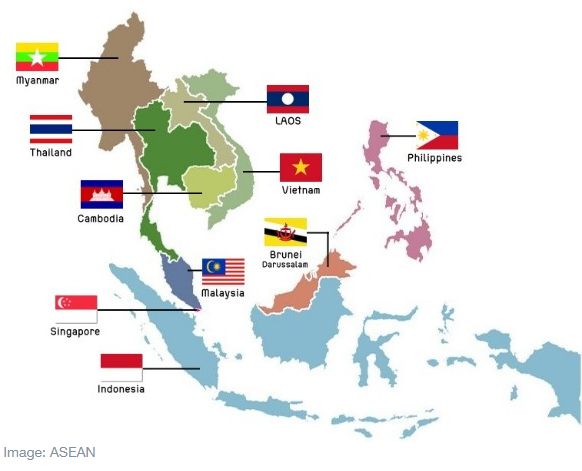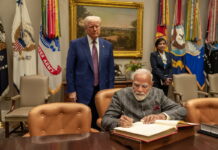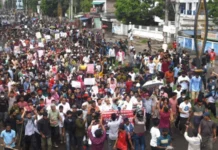During Prime Minister P V Narasimha Rao’s government, India first launched the ‘Look East’ Policy, followed by the Vajpayee government to strengthen relationships with Southeast Asian nations starting with Myanmar. Vajpayee realized that India had missed out on opportunities to take advantage of economic and strategic interests for India and these countries. Meanwhile China made major inroads into Myanmar and took full advantage of its national resources and oil reserves. India’s policies witnessed highs and lows with successive governments and their priorities, in dealing with Southeast Asia.
Modi restarted the stalled programs soon after taking over office in his first term and is continuously trying to improve relationships with Myanmar and other Southeast nations. Former Foreign Minister Jaswant Singh also took a keen interest in developing relations with Myanmar. Modi revived stalled programs like the 1300 Km Trilateral Highway connecting India-Myanmar-Thailand. This project is totally funded by India. Several other agreements in oil exploration and development are on priority.
Sittwe Port is a deep-water port constructed by India in 2016 at Sittwe, the capital of Rakhine State in Myanmar, on the Bay of Bengal. It is situated at the mouth of Kaladan River. (Kala meaning Indian and dan is sound; in Burmese). It was funded by India at a cost of US $120 million, and is part of the larger Kaladan Multimodal Transit Transport Project with India.
Recently, India’s Army Chief and senior MEA officials were in Myanmar to reboot its relationship, keeping in mind China’s recent moves. Strategically, India handed over one of its diesel-electric submarines, Myanmar’s first, to counter China’s growing influence in the region. Myanmar has already commissioned the 3,000-ton submarine INS Sindhuvir, rechristening it UMS Min Ye Thein Kha Thu, which it proudly deployed during the country’s ‘Bandoola’ fleet exercise, which was inspected recently by Commander-in-Chief of Defense Services, Senior General Min Aung Hlaing. Incidentally, the name Bandoola comes from Myanmar’s legendary 18th century General and war hero.
India is now seriously engaging Southeast Asian nations especially after the Galwan clash and aggravating incidents with China. The submarine transfer is especially significant in the backdrop of China having supplied two Ming-class diesel-electric submarines to Bangladesh in 2016, and looking to deliver a Yuan class submarine to Thailand in the coming years.
India has also offered Myanmar a US $6 bn oil-refinery to ramp up presence in energy sector. India proposes to build the oil refinery in the Thanlyin region near Yangon. China currently has more than 70% share of foreign investment in Myanmar’s energy sector.
Indian government is also involved with restoration and conservation of ancient pagodas in Myanmar that had suffered damage due to severe earthquakes in 2016. Prime Minister Modi had also visited the ancient Temple on his visit during 2017. Several other ongoing conservation works,undertaken by Archaeological Survey of India (ASI), include Angkor Wat in Cambodia, Cham Monuments in Vietnam, Thiruketeeswaram Temple in Sri Lanka, Wat Phou Temple Complex in Laos and Pashupatinath Temple in Nepal.
India’s strength in the region lies hugely in its soft power, which she seldom uses, especially with Southeast Asian nations. India’s cultural and religious roots are shared deeply across the entire region. Ramayana and Jateka tales (Buddha’s life) plays are prevalent in countries like Indonesia, Malaysia, Singapore, Myanmar, etc., and depicted vividly during common festivities and religious occasions. With a deeply shared cultural history it is surprising India never took full advantage of the potential in pilgrimage tourism to boost its economic activities in this sector.







